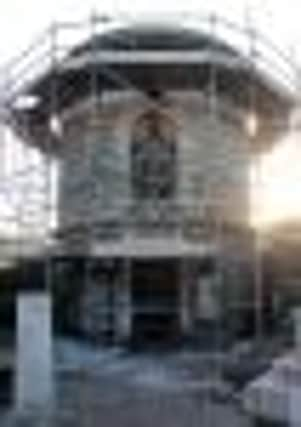New life for philosopher Hume’s final resting place


The grand David Hume mausoleum in Old Calton burial ground was designed by his friend, the architect Robert Adam in 1776.
The building was designed according to the philosopher’s wish that on his death “a monument be built over my body . . . with an inscription containing only my name and the year of my birth and death, leaving it to posterity to add the rest”.
Advertisement
Hide AdAdvertisement
Hide AdThe conservation works were carried out in a joint project led by the city council and conservation body Edinburgh World Heritage (EWH). They focused on removing vegetation, and replacing loose or defective pointing with traditional lime mortar.
The intricate decorative features inspired by ancient Roman styles have received particular attention – the cornice, architrave and frieze around the top of the building.
The city’s culture and leisure convener, Councillor Deidre Brock, said: “I’m delighted the council and EWH have been able to carry out this vital conservation work on the mausoleum of Edinburgh’s own David Hume.
“Hume is a towering figure in Scotland’s history, enormously respected across the world for his outstanding contributions to philosophy, economics, history and the written word.
Advertisement
Hide AdAdvertisement
Hide Ad“It’s particularly pleasing we have secured the necessary funds to conserve his memorial in 2011, the 300th anniversary of his birth.”
A spokesman for the heritage body said: “The Hume mausoleum is of great importance to the city and Scotland.
“This sort of conservation work is essential to keep the building in good order for the future, and to encourage more people to appreciate the value of the city’s historic graveyards.”
Hume, originally David Home, son of Joseph Home of Chirnside, an advocate, and Katherine Falconer, was born in 1711 in a tenement on the north side of the Lawnmarket in Edinburgh.
Advertisement
Hide AdAdvertisement
Hide AdHe studied at Edinburgh University from the age of 12, and became one of the most influential thinkers at the heart of the Scottish Enlightenment.
Despite being described as the “most important philosopher ever to have written in English”, he changed his name in 1734 because the English had difficulty pronouncing “Home” in the Scottish manner.
The total conservation project was funded by the city council and EWH with donations from the Regent, Royal and Carlton Terraces Association among others.
news_en@edinburghnews.com